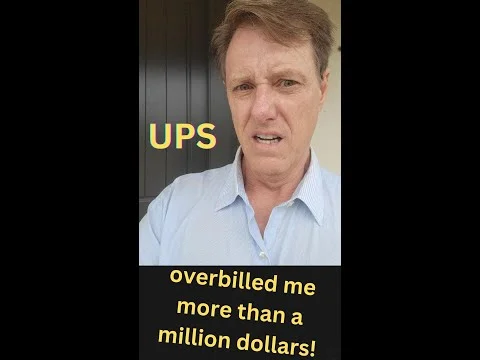- Report: #265403
Complaint Review: FUEL FREEDOM INTERNATIONAL - ALTAMONTE SPRINGS Florida
FUEL FREEDOM INTERNATIONAL Made claims of savings on fuel costs which are totaly un true ALTAMONTE SPRINGS Florida
*Consumer Comment: MY MILEAGE ON MAZDA 3 W/ 87 OCTANE WENT FROM 26-28 MPG TO 35 MPG - SAVINGS $10
*Consumer Suggestion: Here is the EPA report on "gas saving devices". Conclusion: They don't work overall, and may damage your engine!!!!
*Consumer Suggestion: Beth Ann, you have absolutely no idea what you are talking about. I can prove it.
Now having completed a 4500 miles testing, I am in possion of the facts. No more B/S. I have proved by carefull recording of all milage and fuel used, both useing the MPG caps and useing only the gasoline with no caps, i have experimented with all the recommended doses, (ie 1 mg -1/2 mg - 1/4 mg ). I have discovered that by useing 1/2 mg cap this actually reducd the M P G by 28 miles to a tank of fuel. 16 gallons us of straight gasoline gives me 395 miles. Add the 1/4 cap and i get 405 to 412 miles . Add a 1/2 mg cap and the milage reduces to 384 miles. So in effect the 1/2 mg reduces the milage 11 miles to a tank less than straight gasoline of 395 miles.
I personally believe that the research on this product is very limited , because the initial recommended amount was 2 mg caps to the first tank of opprox 12 to 22 gallons followed by 1 cap of 1 mg to each tank of 12 to 22 gallon from that point, next the recommended dose was 1/2 cap to each 12 to 22 gallon tank. Now it is recommended to use 1/4 cap to each tank of 12 to 22 gallon tank. ? What are we to believe ? In to boot we regular read the most rediculas claims of any thing up to 30 % gains. I tend to agree with one of the subscribers to this rip off report . This bisness is not about marketing the product, but is all about recriutment, and most of all the AUTO SHIP.
F F I is in my oppinion a scam . Try to ask some scencible questions and it is a total waste of time. On one occaision i phoned the customer service, Trying to be polite i started to explain the problem , and was immediatly CUT OFF.
There was supposed to be some tests being run at the testing station called millbrook in the uk, these have simply died never mentioned again, Further tests supposidly were to be run in the usa and canada, zero reports about these. regarding the reduction in milage useing the 1/2 cap, my son also experienced the same thing
I find it totaly incredible that i can send so many samples to so many places and people and not recieve one single recomendation
Sorry is a scam
Harry
lima peru
Peru
3 Updates & Rebuttals
Steve
Bradenton,Florida,
U.S.A.
Beth Ann, you have absolutely no idea what you are talking about. I can prove it.
#2Consumer Suggestion
Sun, January 27, 2008
Beth Ann, The power of positive thought along with powerful MLM hype, can get you whatever results you WANT to get. There is no magic pill for increased gas mileage and decreased emissions. Guaranteed. You need to read the EPA report on this. I have a very long automotive background with ASE certifications, as well as being an OTR trucker, and owning my own commercial vehicles running 12-18 hours per day. I also have college level technical certifications in various aspects of performance and engineering. I have built and raced cars. Have you ever built a performance engine? Over the past 25 years, I have seen these miracle [scam] gas saving devices come and go, but none actually work. What I can tell you with ABSOLUTE CONFIDENCE, that these MPG CAPS will damage your engine and/or emissions system, and will actually degrade your mpg. You will contaminate the catalyst in your emissions system with this product over 2-3 years. Guaranteed. FYI...The government does NOT buy up inventions or patents unless it is in the interest of national security. Also guaranteed. And, do a search for Bob Pearson [the FFI founder] on the internet and see how many other MLM and other scams this guy has perpetrated! These MPG Caps are just one more scam on the long list of his scams. I can also absolutely guarantee you that you did NOT increase your gas mileage by 10mpg. It is simply impossible. The computer in your car sets performance parameters. You may squeeze 2-3 mpg increase just by properly inflating your tires, selecting a premium synthetic oil and changing your filters. And maybe another 2-3 mpg on top of that by using your cruise control. That's pushing it. If you optimize all conditions in the operation of your vehicle, you MIGHT see a 5mpg increase. The key word here is MIGHT. I have a 1996 SAAB 900s with 179,000 miles on it. I check my milege at every fillup religiously as a dip in gas mileage is the first indicator of a mechanical problem. I always fill it to the exact same spot in the filler neck. Then I take the mileage and reset the odometer. I consistently get 16-19mpg in the city, and 27-31 mpg when I take a road trip. My secret? PROPERLY inflated tires, the use of the proper viscosity premium 100% synthetic oil like Amsoil, and clean frequently changed filters. And, I use my cruise control on the highway, and stay out of "overdrive" in town. I would bet that you don't even know how to properly determine your average mpg. You most likely just pull some numbers out of thin air that sound good and go with them. FYI..an "average" is 1 number. A "range" is 2 numbers such as 27-29 mpg. Don't you think the automakers have the vested interest in getting a higher MPG average on the cars they build. Have you ever heard of CARB requirements? EPA? Just common sense here. I guess you think the scammers who came up with this miracle pill know more than the engineers at the major automakers, right? Give me a break. The key words of the day: COMMON SENSE. >>> Thriftyearth.com EMMAUS, Pennsylvania U.S.A. MY MILEAGE ON MAZDA 3 W/ 87 OCTANE WENT FROM 26-28 MPG TO 35 MPG - SAVINGS $10 I placed 1/2 MPG-CAP by Fuel Freedom International into 10 Galons of 87 octane gasoline in my Mazda 3 and my mileage increased from 26-28 miles per gallon to an average of 35-37 miles per gallon. The cost of the MPG-CAP is $2.50 and for 20 gallons of gasoline, 1 MPG-CAP averaged a savings of $10.00. Yes, if you use too much per gallons of gasoline one may experience a decrease in mileage versus an increase. Fuel Freedom International also has a 1 million insurance policy, so if you feel that your car was damaged and you can prove that the MPG-CAP was the reason, file a claim. Also the Ukraine report may be found in .pdf file format at: www.thriftyearth.com on the products & press link. The country has tested and the results are just skippy. Yes, FFI is a MLM company, and the reason for that is because this product needed to be turned over to the people to promote, for if the US Gov't could have got it's mits on the patent, it wouldn't have been available to the people and for the people as a means of increasing fuel efficiency by 7-14%, and decreasing emmissions by 75%. Be proactive, start locally think globally, and help yourself. Have a great day! Beth Ann Thriftyearth.com EMMAUS, Pennsylvania U.S.A.
Steve
Bradenton,Florida,
U.S.A.
Here is the EPA report on "gas saving devices". Conclusion: They don't work overall, and may damage your engine!!!!
#3Consumer Suggestion
Sat, January 26, 2008
Gas prices are up, and so is the volume of advertising for "gas-saving" products. When gasoline prices rise, consumers often look for ways to improve fuel efficiency. Although there are practical steps you can take to increase gas mileage, the Federal Trade Commission (FTC) warns you to be wary of any gas-saving claims for automotive devices or oil and gas additives. Even for the few gas-saving products that have been found to work, the savings have been small. "Gas-Saving" Advertising Claims Be skeptical of the following kinds of advertising claims. "This gas-saving product improves fuel economy by 20 percent." Claims usually tout savings ranging from 12 to 25 percent. However, the Environmental Protection Agency (EPA) has evaluated or tested more than 100 alleged gas-saving devices and has not found any product that significantly improves gas mileage. In fact, some "gas-saving" products may damage a car's engine or cause substantial increases in exhaust emissions. The gas-saving products on the market fall into clearly defined categories. Although the EPA has not tested or evaluated every product, it has tried to examine at least one product in each category. See "Devices Tested by EPA" at the end of this article for category descriptions and product names. "After installing your product on my car, I got an extra 4 miles per gallon." Many ads feature glowing testimonials by satisfied customers. Yet, few consumers have the ability or the equipment to test for precise changes in gas mileage after installing a gas-saving product. Many variables affect fuel consumption, including traffic, road and weather conditions, and the car's condition. For example, one consumer sent a letter to a company praising its "gas-saving" product. At the time the product was installed, however, the consumer also had received a complete engine tune-up - a fact not mentioned in the letter. The entire increase in gas mileage attributed to the "gas-saving" product may well have been the result of the tune-up alone. But from the ad, other consumers could not have known that. "This gas-saving device is approved by the Federal government." No government agency endorses gas-saving products for cars. The most that can be claimed in advertising is that the EPA has reached certain conclusions about possible gas savings by testing the product or by evaluating the manufacturers own test data. If the seller claims that the EPA has evaluated its product, ask for a copy of the EPA report, or check www.epa.gov for information. In some instances, false claims of EPA testing or approval have been made. Product Complaints and Refunds: If you're dissatisfied with a gas-saving product, contact the manufacturer and ask for a refund. Most companies offer money-back guarantees. Contact the company, even if the guarantee period has expired. If you're not satisfied with the company's response, contact your local or state consumer protection agency or the Better Business Bureau. Shifting Gears: Real Money-Saving Steps: There are numerous no or low cost steps you can take to combat rising gas prices. The most important place to start is at the gas pump; buy only the octane level gas you need. All gas pumps must post the octane rating of the gas under the FTC's Fuel Rating Rule. Remember, the higher the octane, the higher the price. Check your owner's manual to determine the right octane level for your car. >> Gas-Saving Products: Facts or Fuelishness? From About.com (Continued from Page 1) Gas-Saving Products: Facts or Fuelishness? Here are some additional tips from the EPA to help you get better gas mileage. Drive More Efficiently Stay within posted speed limits. The faster you drive, the more fuel you use. For example, driving at 65 miles per hour (mph), rather than 55 mph, increases fuel consumption by 20 percent. Driving at 75 mph, rather than 65 mph, increases fuel consumption by another 25 percent. Use overdrive gears. Overdrive gears improve the fuel economy of your car during highway driving. Your car's engine speed decreases when you use overdrive. This reduces both fuel consumption and engine wear. Use cruise control. Using cruise control on highway trips can help you maintain a constant speed and, in most cases, reduce your fuel consumption. Anticipate driving situations. If you anticipate traffic conditions and don't tailgate, you can avoid unnecessary braking and acceleration, and improve your fuel economy by 5 to 10 percent. In city driving, nearly 50 percent of the energy needed to power your car goes to acceleration. Go easy on the gas pedal and brakes. "Jack-rabbit" starts and sudden stops are wasteful. Avoid unnecessary idling. Turn off the engine if you anticipate a lengthy wait. No matter how efficient your car is, unnecessary idling wastes fuel, costs you money and pollutes the air. Combine errands. Several short trips taken from a cold start can use twice as much fuel as one trip covering the same distance when the engine is warm. Remove excess weight from the trunk. Avoid carrying unneeded items, especially heavy ones. An extra 100 pounds in the trunk reduces a typical car's fuel economy by one to two percent Maintain Your Car Keep your engine tuned. Studies have shown that a poorly tuned engine can increase fuel consumption by as much as 10 to 20 percent depending on a car's condition. Follow the recommended maintenance schedule in your owner's manual; you'll save fuel and your car will run better and last longer. Keep your tires properly inflated and aligned. Car manufacturers must place a label in the car stating the correct tire pressure. The label usually is on the edge of the door or door jamb, in the glove box, or on the inside of the gas cap cover. If the label lists a psi (pounds per square inch) range, use the higher number to maximize your fuel efficiency. Underinflated tires cause fuel consumption to increase by six percent. Change your oil. Clean oil reduces wear caused by friction between moving parts and removes harmful substances from the engine. Change your oil as recommended by the vehicle manufacturer. Check and replace air filters regularly. Your car's air filter keeps impurities in the air from damaging internal engine components. Not only will replacing a dirty air filter improve your fuel economy, it also will protect your engine. Clogged filters can cause up to a 10 percent increase in fuel consumption. Consider Buying A Fuel-Efficient Vehicle Deciding which vehicle to buy may be the most important fuel economy decision you make. The difference between a car that gets 20 MPG (miles per gallon) and one that gets 30 MPG amounts to $1,500.00 over 5 years, assuming gas costs $1.50 per gallon and you drive 15,000 miles a year. Visit www.fueleconomy.gov for more information. You'll find gas mileage estimates and other data from EPA for 1985-2001 model year cars. EPA Evaluation Efforts The EPA evaluates or tests products to determine whether their use will result in any significant improvement or detriment to fuel economy. However, the EPA cannot say what effect gas-saving products will have on a vehicle over time because it hasn't conducted any durability tests. It's possible that some products may harm the car or may otherwise adversely affect its performance. In fact, today's vehicles' emission control systems are very sophisticated and complex. They have On Board Diagnostic features that alert the driver to problems associated with the emission control and fuel delivery systems. Retrofit products may have an adverse effect on these systems. >> Devices Tested by EPA The following list categorizes various types of "gas-saving" products, explains how they're used and gives product names. Those with asterisks may save measurable, but small, amounts of gas. All others have been found not to increase fuel economy. Air Bleed Devices: These devices bleed air into the carburetor. They usually are installed in the Positive Crankcase Ventilation line or as a replacement for idle-mixture screws. The EPA has evaluated the following products: ADAKS Vacuum Breaker Air Bleed; Air-Jet Air Bleed; Aquablast Wyman Valve Air Bleed; Auto-Miser; Ball-Matic Air Bleed; Berg Air Bleed; Brisko PCV; Cyclone-Z; Econo Needle Air Bleed; Econo-Jet Air Bleed Idle Screws; Fuel Max*; Gas Saving Device; Grancor Air Computer; Hot Tip; Landrum Mini-Carb; Landrum Retrofit Air Bleed; Mini Turbocharger Air Bleed; Monocar HC Control Air Bleed; Peterman Air Bleed; Pollution Master Air Bleed; Ram-Jet; Turbo-Dyne G.R. Valve. Vapor Bleed Devices: These devices are similar to the air bleed devices, except that induced air is bubbled through a container of a water and anti-freeze mixture, usually located in the engine compartment. The EPA has evaluated: Atomized Vapor Injector; Frantz Vapor Injection System; Hydro-Vac: POWERFUeL; Mark II Vapor Injection System; Platinum Gasaver; V-70 Vapor Injector; SCATPAC Vacuum Vapor Induction System: Econo-Mist Vacuum Vapor Injection System; Turbo Vapor Injection System. Liquid Injection; These products add liquid into the fuel/air intake system and not directly into the combustion chamber. The EPA has evaluated: Goodman Engine System - Model 1800; Waag-Injection System*. Ignition Devices: These devices are attached to the ignition system or are used to replace original equipment or parts. The EPA has evaluated: Autosaver; Baur Condenser; BIAP Electronic Ignition Unit; Fuel Economizer; Magna Flash Ignition Control System; Paser Magnum/Paser 500/Paser 500 HEI; Special Formula Ignition Advance Springs. Fuel Line Devices (heaters or coolers): These devices heat the fuel before it enters the carburetor. Usually, the fuel is heated by the engine coolant or by the exhaust or electrical system. The EPA has evaluated: FuelXpander; Gas Meiser I; Greer Fuel Preheater; Jacona Fuel System; Optimizer; Russell Fuelmiser. Fuel Line Devices (magnets): These magnetic devices, clamped to the outside of the fuel line or installed in the fuel line, claim to change the molecular structure of gasoline. The EPA has evaluated: PETRO-MIZER; POLARION-X; Super-Mag Fuel Extender; Wickliff Polarizer [fuel line magnet/intake air magnet]. Fuel Line Devices (metallic): Typically, these devices contain several dissimilar metals that are installed in the fuel line, supposedly causing ionization of the fuel. The EPA has evaluated: Malpassi Filter King [fuel pressure regulator]; Moleculetor. Mixture Enhancers (under the carburetor): These devices are mounted between the carburetor and intake manifold and supposedly enhance the mixing or vaporization of the air/fuel mixture. The EPA has evaluated: Energy Gas Saver; Environmental Fuel Saver; Gas Saving and Emission Control Improvement Device; Glynn-50; Hydro-Catalyst Pre-Combustion Catalyst System; PETROMIZER SYSTEM; Sav-A-Mile; Spritzer; Turbo-Carb; Turbocarb. Mixture Enhancers (others): These devices make some general modifications to the vehicle intake system. The EPA has evaluated: Basko Enginecoat; Dresser Economizer; Electro-Dyne Superchoke; Filtron Urethane Foam Filter; Lamkin Fuel Metering Device; Smith Power and Deceleration Governor. Internal Engine Modifications: These devices make physical or mechanical function changes to the engine. The EPA has evaluated: ACDS Automotive Cylinder Deactivation System*; Dresser Economizer; MSU Cylinder Deactivation*. >>> Accessory Drive Modifiers: These devices reduce power to specific auto accessories. The EPA has evaluated: Morse Constant Speed Accessory Drive**; P.A.S.S. Kit**; PASS Master Vehicle Air Conditioner**. Fuels and Fuel Additives: These materials are added to the gas tank. The EPA has evaluated: Bycosin; EI-5 Fuel Additive; Fuelon Power; Johnson Fuel Additive; NRG #1 Fuel Additive; QEI 400 Fuel Additive; Rolfite Upgrade Fuel Additive; Sta-Power Fuel Additive; Stargas Fuel Additive; SYNeRGy-1; Technol G Fuel Additive; ULX-15/ULX-15D; Vareb 10 Fuel Additive; XRG #1 Fuel Additive. Oils and Oil Additives: Usually these materials are poured into the crankcase. The EPA has evaluated: Analube Synthetic Lubricant; Tephguard. Driving Habit Modifiers: These are lights or sound devices to tell the driver to reduce acceleration or to shift gears. The EPA has evaluated: AUTOTHERM**; Fuel Conservation Device; Gastell; IDALERT**. Miscellaneous The EPA has evaluated: BRAKE-EZ; Dynamix; Fuel Maximiser; Gyroscopic Wheel Cover; Kamei Spoilers**; Kat's Engine Heater; Lee Exhaust and Fuel Gasification EGR; Mesco Moisture Extraction System; P.S.C.U. 01 Device; Treis Emulsifier. * Indicated a very small improvement in fuel economy but with an increase in exhaust emissions. According to Federal regulations, installation of this device could be considered illegal tampering. ** Indicated a very small improvement in fuel economy without an increase in exhaust emissions. However, cost-effectiveness must be determined by the consumer for a particular application. >>>
Thriftyearth.com
EMMAUS,Pennsylvania,
U.S.A.
MY MILEAGE ON MAZDA 3 W/ 87 OCTANE WENT FROM 26-28 MPG TO 35 MPG - SAVINGS $10
#4Consumer Comment
Sun, November 25, 2007
I placed 1/2 MPG-CAP by Fuel Freedom International into 10 Galons of 87 octane gasoline in my Mazda 3 and my mileage increased from 26-28 miles per gallon to an average of 35-37 miles per gallon. The cost of the MPG-CAP is $2.50 and for 20 gallons of gasoline, 1 MPG-CAP averaged a savings of $10.00. Yes, if you use too much per gallons of gasoline one may experience a decrease in mileage versus an increase. Fuel Freedom International also has a 1 million insurance policy, so if you feel that your car was damaged and you can prove that the MPG-CAP was the reason, file a claim. Also the Ukraine report may be found in .pdf file format at: www.thriftyearth.com on the products & press link. The country has tested and the results are just skippy. Yes, FFI is a MLM company, and the reason for that is because this product needed to be turned over to the people to promote, for if the US Gov't could have got it's mits on the patent, it wouldn't have been available to the people and for the people as a means of increasing fuel efficiency by 7-14%, and decreasing emmissions by 75%. Be proactive, start locally think globally, and help yourself. Have a great day! Beth Ann






















